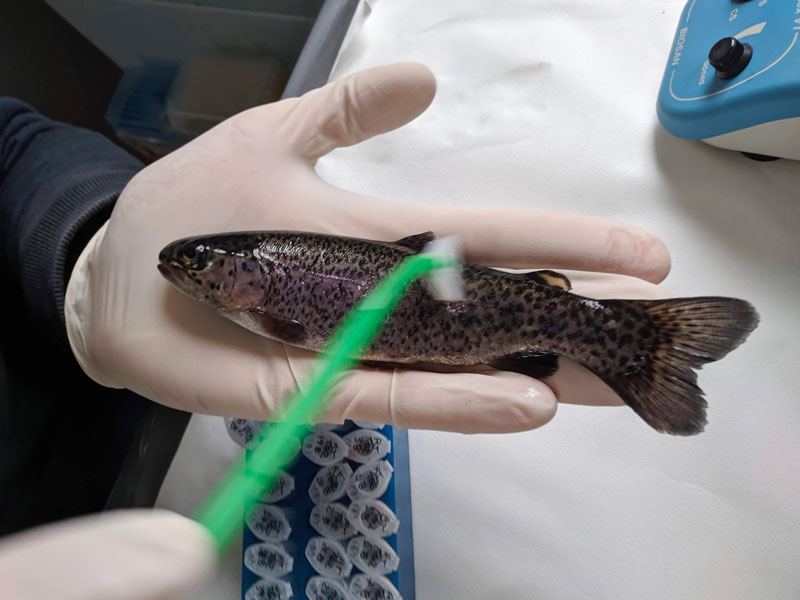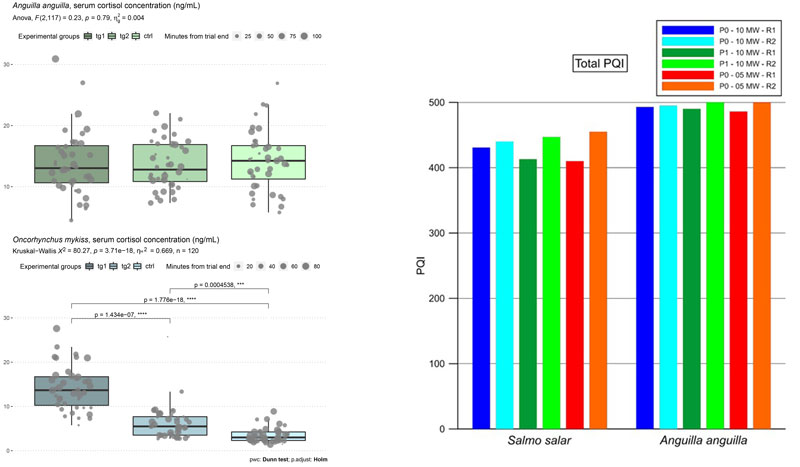How do hydropower sites reflect on fish populations? ALPHEUS Fish Desktop and Field Research
Introduction
In this webinar, fish-focused research implemented within the European H2020 “ALPHEUS” project will be disseminated to a diverse audience composed of hydropower engineers and developers as well as fish biologists and physiologists.
ALPHEUS investigated hydropower-related impacts on fish in two different, yet complementary, manners: the potential impacts of common hydropower mechanisms (i.e. rapid decompression, cavitation, shear, turbulence and blade strike) were assessed computationally, in collaboration with ADT, by means of CFD-based mathematical dose-response mortality equations using the Biological Performance Assessment toolset developed by the Pacific Northwest National Laboratory (USA). Also, as a huge knowledge gap on the physiological implications of the design and operation of hydropower (and additional water management activities) exists, the routine spectrum of analysis encompassing external or internal assessment of physical injuries and mortality rates was coupled to the monitoring of fish hormonal changes using traditional and non-conventional (easier to sample) matrices.

Based on biological and ecological traits (e.g. lifestyle, migratory patterns) as well as practical features (e.g. data availability), the above desktop and field research was conducted on two economically and biologically relevant fish species representative of the Anguillidae (i.e. eels) and Salmonidae (i.e. trouts, salmons) families.
Webinar Summary
- Learn to comparatively assess the biological impacts on fish caused by an initial and optimized scaled turbine prototypes designed within ALPHEUS
- Understand the added value brought by the monitoring of animal physiology in identifying non-lethal effects of water management infrastructures and supporting an informed placement and usage of fish screens
- Discover the applicability of easier-to-sample non-conventional biological matrices for measuring hormonal changes in fish
- Obtain knowledge of the boundaries and methods for investigating fish-hydropower cohabitation

Which design cases are used?
- The BioPA-based ALPHEUS case study
- Stress Response to Entrainment Flow Speed near Pump Inlet Fish Screens in Two Model Teleost Species, Anguilla anguilla and Oncorhynchus mykiss
What job functions is this improving?
The evaluation of the design and operation of hydropower turbines and the impacts of placement and usage of fish screens.

Participants
 |
Andrea Miccoli, a researcher at the Italian National Research Council, Inst. for Marine Biological Resources and Biotechnology of Ancona. He previously held the position of fixed-term researcher in Zoology at the University of Tuscia from December 2018 to February 2023. He obtained his PhD in Marine Biology and Ecology in 2017 with a major in fish reproductive physiology and spent a year at the Bermuda Institute of Ocean Sciences as Research Associate II, during which he participated in several oceanographic cruises funded by NASA (Exports) and NSF (BIOS-SCOPE, OFP). His current lines of applied research are mainly centred on animal physiology (with a particular focus on fish). Within ALPHEUS, he acts as the principal investigator for Tuscia University and is personally involved in the implementation of tasks 2.5 (Fish survival parameters) and 4.4 (Monitoring of fish mortality, stress levels and behaviour). |
| Antonio De Luca has been a PhD student in Science, Technology and Biotechnology for Sustainability since February 2021. He obtained his Master’s degree in Marine Biology and Ecology in 2020 with an experimental thesis in biological oceanography by comparing the phytoplanktonic primary production estimated by a bio-optical model and a biogeochemical model. His PhD activities and research within ALPHEUS are focused on the implementation of tasks 2.5, 4.4, 5.4 (Assessment of environmental issues for the commissioning of low-head hydropower plants) and contribution to task 5.5 (Geographical Information System Tool as a knowledge base for users and stakeholders). |  |
The complete video recording of the event can be accessed here or viewed below

